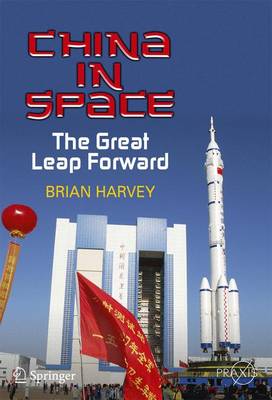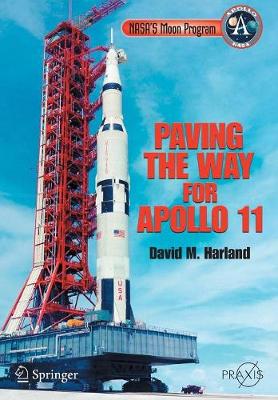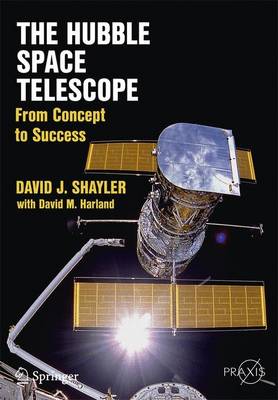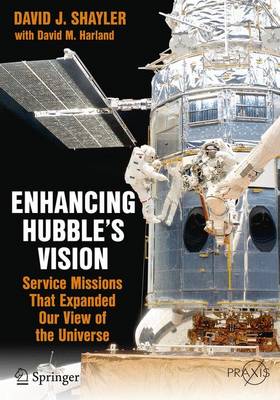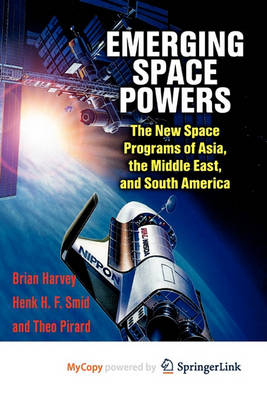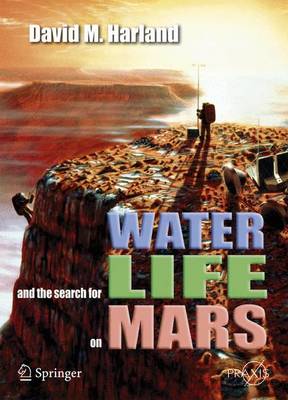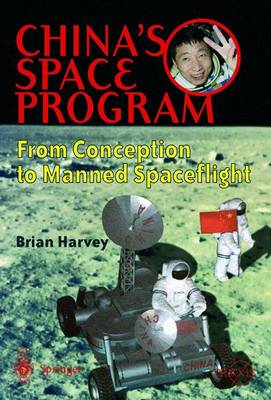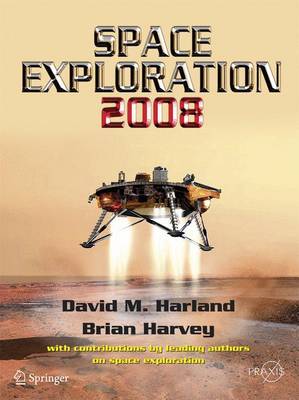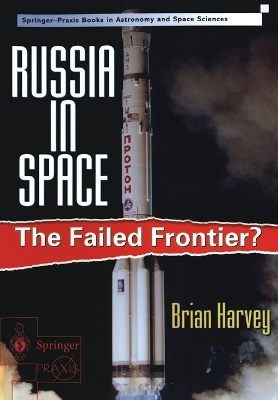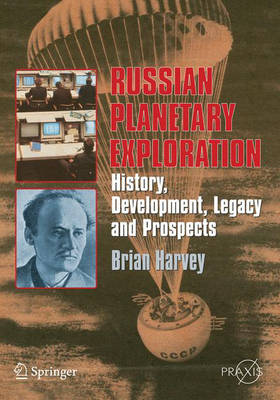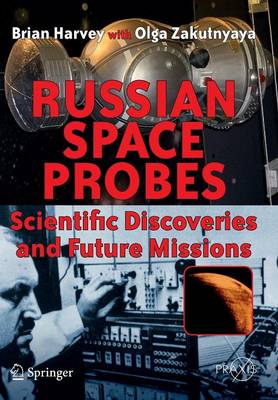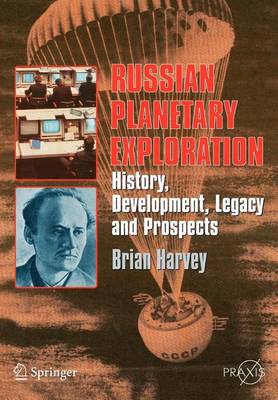Springer Praxis Books
19 total works
This book tells the story of the Soviet and Russian lunar programme, from its origins to the present-day federal Russian space programme. Brian Harvey describes the techniques devised by the USSR for lunar landing, from the LK lunar module to the LOK lunar orbiter and versions tested in Earth's orbit. He asks whether these systems would have worked and examines how well they were tested. He concludes that political mismanagement rather than technology prevented the Soviet Union from landing cosmonauts on the moon. The book is well timed for the return to the moon by the United States and the first missions there by China and India.
In May 1961, President John F. Kennedy committed the United States to landing a man on the moon before the end of the decade. With just a handful of years to pull it off, NASA authorized the Project Gemini space program, which gathered vital knowledge needed to achieve the nation’s goal. This book introduces the crucial three-step test program employed by the Gemini system, covering:
- The short unmanned orbital flight of Gemini 1 that tested the compatibility of launch vehicle, spacecraft and ground systems.
- The unmanned suborbital flight of Gemini 2 to establish the integrity of the reentry system and protective heat shield.
- The three-orbit manned evaluation flight of Gemini 3, christened ‘Molly Brown’ by her crew. A mission recalled orbit by orbit, using mission transcripts, post-flight reports and the astronauts’ own account of their historic journey.
This book provides an overview of the origins of the Apollo program and descriptions of the ground facilities, launch vehicles and spacecraft that were developed in the quest to reach - and return from - the surface of the moon. It will serve as an invaluable single-volume sourcebook for space enthusiasts, space historians, journalists, and others. The text includes a comprehensive collection of tables listing facts and figures for each mission.
In 'Paving the Way for Apollo 11' David Harland explains the lure of the Moon to classical philosophers, astronomers, and geologists, and how NASA set out to investigate the Moon in preparation for a manned lunar landing mission. It focuses particularly on the Lunar Orbiter and Surveyor missions.
The highly successful Hubble Space Telescope was meant to change our view and understanding of the universe. Within weeks of its launch in 1990, however, the space community was shocked to find out that the primary mirror of the telescope was flawed. It was only the skills of scientists and engineers on the ground and the daring talents of astronauts sent to service the telescope in December 1993 that saved the mission.
For over two decades NASA had developed the capabilities to service a payload in orbit. This involved numerous studies and the creation of a ground-based infrastructure to support the challenging missions. Unique tools and EVA hardware supported the skills developed in crew training that then enabled astronauts to complete a demanding series of spacewalks.
Drawing upon first hand interviews with those closely involved in the project over thirty years ago this story explains the development of the servicing mission concept and the hurdles that had to be overcome to not only launch the telescope but also to mount the first servicing mission – a mission that restored the telescope to full working order three years after its launch, saved the reputation of NASA, and truly opened a new age in understanding of our place in space.
This is not just a tale of space age technology, astronauts and astronomy. It is also a story of an audacious scientific vision, and the human ingenuity and determination to overcome all obstacles to make it possible. Hubble Space Telescope: From Concept to Success is a story of an international partnership, dedicated teamwork and a perfect blend of human and robotic space operations that will inspire people of all ages. The subsequent servicing missions that enabled the telescope to continue its scientific program beyond its 25th year in orbit are described in a companion volume Enhancing Hubble’s Vision: Servicing a National Treasure.
This book provides an annual update on recent space launches, missions and results. The annual, written for both young and older space enthusiasts, provides a regular, balanced review of all the world's major space programmes. It covers space exploration from a variety of angles: looking back at past missions, reviewing those currently under way and looking to those planned for the future. The ten invited contributions each year will cover a variety of topics within these areas. The book is for space enthusiasts from teens upwards through to professionals working in the worldwide space industry and journalists covering space issues.
This book tells the story of the four missions to maintain Hubble's successful operation. Between 1997 and 2009 these repaired, serviced and upgraded the instruments on the telescope to maintain its state-of-the-art capabilities. It draws on first hand interviews with those closely involved in the project. The spacewalking skills and experiences gained from maintaining and upgrading Hubble had direct application to the construction of the International Space Station and help with its maintenance. These skills can be applied to future human and robotic satellite servicing and maintenance activities as well, not only in Earth orbit but at locations deeper in space.
A companion to this book, The Hubble Space Telescope: From Concept to Success, relates the events of the Telescope’s launch in 1990 and its rough start, after a 20-year struggle to place a large optical telescope in orbit. Originally intended to operate for fifteen years, Hubble has just passed its 25th anniversary, and there is every expectation that it will survive for thirty years. Despite its early problems, the Hubble Space Telescope has become a lasting legacy of the Space Shuttle program, and indeed is a national treasure.
This work introduces the important emerging space powers of the world.
Brian Harvey describes the origins of the Japanese space program, from rocket designs based on WW II German U-boats to tiny solid fuel 'pencil' rockets, which led to the launch of the first Japanese satellite in 1970. The next two chapters relate how Japan expanded its space program, developing small satellites into astronomical observatories and sending missions to the Moon, Mars, comet Halley, and asteroids.
Chapter 4 describes how India's Vikram Sarabhai developed a sounding rocket program in the 1960s. The following chapter describes the expansion of the Indian space program. Chapter 6 relates how the Indian space program is looking ahead to the success of the moon probe Chandrayan, due to launch in 2008, and its first manned launching in 2014. Chapters 7, 8, and 9 demonstrate how, in Iran, communications and remote sensing drive space technology.
Chapter 10 outlines Brazil's road to space, begun in the mid-1960's with the launch of the Sonda sounding rockets. The following two chapters describe Brazil's satellites and space launch systems and plans for the future. Chapters 13 and 14 study Israel's space industry. The next chapters look at the burgeoning space programs of North and South Korea.
The book ends by contrasting and comparing all the space programs and speculating how they may evolve in the future. An appendix lists all launches and launch attempts to date of the emerging space powers.
Relates how NASA/ESA have sought evidence of life on Mars, with the prevailing mood sometimes being optimistic and sometimes pessimistic.
Details an account of the rationale for the tests for life carried out by the Viking missions in 1976, with an account of the debate over their results.
A concise primer for readers wishing to 'bone up' when NASA next sends a lander explicitly to seek life on Mars.
Discusses the nature of life on Mars in terms of the most primitive forms of life on Earth, and reviews the implications of there being life on both planets.
Focuses on the causes of the failures and discusses how the engineering knowledge base has been enhanced by the lessons learned.
Discusses non-fatal anomalies which do not affect the ultimate success of a mission, but which are failures nevertheless.
Describes engineering aspects of the spacecraft, making this a valuable complementary reference work to conventional engineering texts.
China's Space Program - From Conception to Manned Spaceflight
by Brian Harvey
Explorers have made some of the fundamental discoveries of the Space Age. Explorer 1 discovered Earth’s radiation belts. Later Explorers surveyed the Sun, the X-ray and ultraviolet universes, black holes, magnetars and gamma ray bursts. An Explorer found the remnant of the Big Bang. One Explorer chased and was the first to intercept a comet.
The program went through a period of few launches during the crisis of funding for space science in the 1980s. However, with the era of ‘faster, cheaper, better,’ the program was reinvented, and new exiting missions began to take shape, like Swift and the asteroid hunter WISE.
Discovering the Cosmos with Small Spacecraft gives an account of each mission and its discoveries. It breaks down the program into its main periods of activity and examines the politics and debate on the role of small spacecraft in space science. It introduces the launchers (Juno, Thor, etc.), the launch centers, the ground centers and key personalities like James Van Allen who helped develop and run the spacecraft’s exciting programs.
Russia’s accomplishments in planetary space exploration were not achieved easily. Formerly, the USSR experienced frustration in trying to tame unreliable Molniya and Proton upper stages and in tracking spacecraft over long distances. This book will assess the scientific haul of data from the Venus and Mars missions and look at the engineering approaches. The USSR developed several generations of planetary probes: from MV and Zond to the Phobos type. The engineering techniques used and the science packages are examined, as well as the nature of the difficulties encountered which ruined several missions. The programme’s scientific and engineering legacy is also addressed, as well as its role within the Soviet space programme as a whole.
Brian Harvey concludes by looking forward to future Russian planetary exploration (e.g Phobos Grunt sample return mission). Several plans have been considered and may, with a restoration of funding, come to fruition. Soviet studies of deep space and Mars missions (e.g. TMK, Aelita) have much to offer contemporary planners in Europe and the United States. Long-duration ISS and Mir missions provide a medical record of considerable value in constructing human exploration of Mars.
Illustrated with the photographs taken by Soviet Venus and Mars probes, pictures of the spacecraft, diagrams of the flight paths and landing techniques and maps of the landing sites, the book will build on the published scientific papers from the programme, archived material and memoirs and other material coming to light in recent years.

